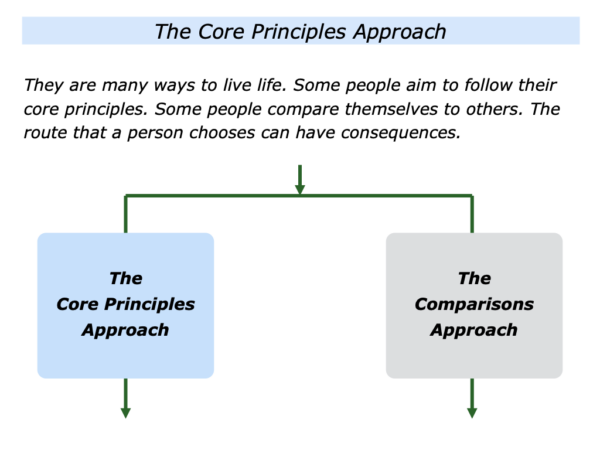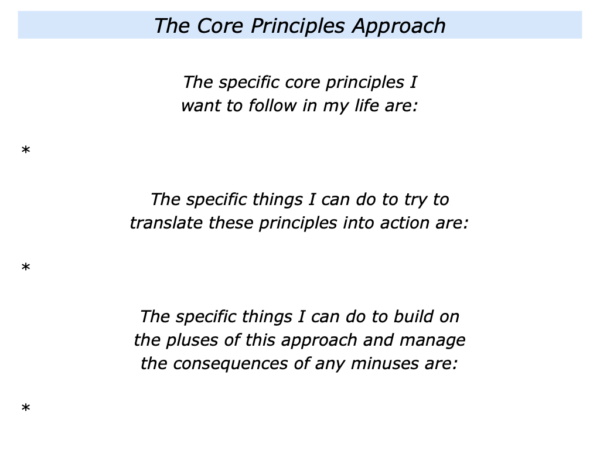
Some people aim to follow their core principles in life. They aim to feel true to themselves and can sometimes experience a sense of peace. There may be times, however, when it can be challenging to follow this approach in certain situations.
Some people keep comparing themselves to others. They may do this when focusing on their life, school grades, career or status. This approach can sometimes be motivating. But it can also be exhausting and lead to a person feeling they will never be good enough.
Different people follow these approaches in different ways. Let’s explore how they may take these routes.
The Core Principles Approach
People who take this route may do so for different reasons. Some may have grown up in a family where they were encouraged to follow certain principles. One person expressed this in the family way.
“My parents encouraged me to appreciate life, be grateful and help other people. They also encouraged me to follow my interests and keep learning. This was helpful because I was not very good at school.”
Some people pursue certain core principles because they aim to follow a spiritual faith, a moral compass or a vocation. They may then aim to translate these principles into action.
People who follow this approach keep returning to their centre. They focus on how they can follow these principles in their daily lives and work. They aim to be the best they can be rather than trying to be the best.
Different people aim to follow different principles. Here are some themes that people may mention when describing their approach.
My Core Principles – The principles
I want to follow in my life are:
To be grateful … To be generous … To be kind … To encourage people … To care for my loved ones … To a good partner and parent … To respect all living things … To follow my spiritual faith.
To build on my strengths … To do good quality work … To create beauty … To create cultures in which people can thrive … To do positive things during my time on the planet.
The core principles approach has many pluses. People are more likely to develop a sense of purpose. They also have a moral compass they can follow when making decisions.
People who take this approach can find it gives them strength when tackling tough challenges. Translating their principles into action can also lead to them sometimes experiencing a sense of peace.
The approach also has some minuses. People may find it challenging to follow their principles in certain situations. They may sometimes feel uncertain about what is the best route to take or be criticised for being different.
They may need to learn how to retain their centre but continue to thrive. This can involve continuing to follow their principles but applying these in a pragmatic way to get positive results. This can be challenging.
The Comparison Approach
Some individuals follow the comparison approach. They compare themselves to others or to the status they believe they should have achieved by a certain stage of life.
Some may have grown up with parents who told them to compare themselves to others in their school class. A young person who got five A grades and one B+ may have been greeted with the response:
“So what went wrong?”
The Psychology Today website provides some background to this approach. Here is an excerpt from the site.
Social Comparison Theory
People constantly evaluate themselves in domains like attractiveness, wealth, intelligence, and success.
The theory was developed in 1954 by psychologist Leon Festinger. Later research has shown that people who regularly compare themselves to others may find motivation to improve.
But they may also experience feelings of deep dissatisfaction, guilt, or remorse, and engage in destructive behaviours like lying or disordered eating.
Let’s return to your own life and work. Imagine that you want to follow elements of the core principles approach. How can you do this in your own way?
What are the core principles you want to follow? How can you try to translate these into action? How can you build on the pluses of this approach and, if necessary, manage the consequences of any minuses?
If you wish, try tackling the exercise on this theme. This invites you to complete the following sentences.







Leave a Reply